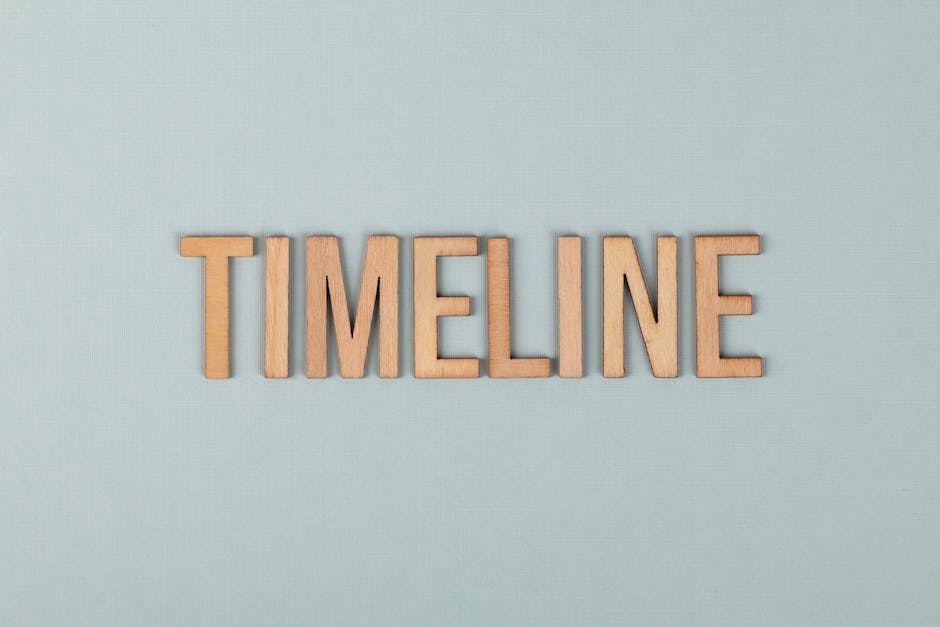Transferring IRA Assets: A Step-By-Step Guide
Planning for retirement involves making informed decisions to ensure financial security in the later years of life. One important aspect of retirement planning is understanding and managing Individual Retirement Accounts (IRAs). This article will guide you through the process of transferring IRA assets, covering topics like understanding different IRA types, reasons for transferring, and how to select a new provider. Additionally, you will learn about the timeline of transfers, investment strategies, and post-transfer account management to help you make the most of your retirement savings.
Understanding IRA Types
Individual Retirement Accounts (IRAs) are designed to help individuals save for retirement in a tax-advantaged way. There are different types of IRAs available, each with its own eligibility requirements, contribution limits, and tax implications. In this guide, we will discuss the four primary types of IRAs: Traditional, Roth, SEP, and SIMPLE IRAs.A Traditional IRA is a retirement account that allows you to make pre-tax contributions. This means that the money you contribute to a Traditional IRA will not be taxed before it is invested, thereby lowering your taxable income in the year you make the contribution. However, when you withdraw funds from a Traditional IRA in retirement, those withdrawals will be taxed as regular income.Eligibility: Anyone with earned income can contribute to a Traditional IRA. However, the ability to deduct contributions on your tax return depends on your income and whether you or your spouse are covered by a workplace retirement plan.Contribution limits: As of 2022, the maximum annual contribution to a Traditional IRA is $6,000 ($7,000 if you are age 50 or older).A Roth IRA is another type of retirement account, but it differs from a Traditional IRA in terms of taxation. Contributions to a Roth IRA are made with after-tax dollars, meaning you will not receive an upfront tax deduction. However, when you withdraw funds from a Roth IRA in retirement, those withdrawals will be tax-free, provided certain conditions are met.Eligibility: To contribute to a Roth IRA, your modified adjusted gross income (MAGI) must be below certain limits, which vary based on your tax filing status.Contribution limits: Like a Traditional IRA, the maximum annual contribution to a Roth IRA is $6,000 ($7,000 if you are age 50 or older).A Simplified Employee Pension (SEP) IRA is a type of retirement plan designed for self-employed individuals and small business owners. SEP IRAs allow employers to make tax-deductible contributions on behalf of eligible employees, and those contributions grow tax-deferred until withdrawn in retirement.Eligibility: To be eligible to participate in a SEP IRA, an employee must meet certain requirements, including a minimum age, length of service, and amount of compensation.Contribution limits: For 2022, the maximum annual contribution an employer can make to an employee’s SEP IRA is the lesser of 25% of the employee’s compensation or $61,000.A Savings Incentive Match Plan for Employees (SIMPLE) IRA is another type of retirement plan designed for small businesses with 100 or fewer employees. SIMPLE IRAs allow employees to make pre-tax contributions through salary deferral, and employers are required to make either matching or non-elective contributions on behalf of eligible employees.Eligibility: Employees who earned at least $5,000 in compensation during any two preceding years and are expected to earn at least $5,000 in the current year are generally eligible to participate in a SIMPLE IRA.Contribution limits: For 2022, employees can contribute up to $14,000 to a SIMPLE IRA, with an additional catch-up contribution of $3,000 allowed for those age 50 or older.IRAs offer various options for individuals and small business owners to save for retirement in a tax-advantaged manner. By understanding the differences between Traditional, Roth, SEP, and SIMPLE IRAs, you can select the appropriate IRA type based on your unique financial situation and retirement goals.

Reasons for Transferring IRA Assets
Transferring IRA (Individual Retirement Account) assets is a common practice among adults who are planning for their retirement. There are several reasons why people choose to transfer their IRA assets, such as:
- Better investment options: One of the primary reasons for transferring IRA assets is to gain access to better investment options. Different financial institutions offer various investment options, including stocks, bonds, mutual funds, and exchange-traded funds. By transferring your IRA assets to an institution with a wider array of investment choices, you potentially enhance your portfolio’s diversification and overall performance.
- Lower fees: Financial institutions charge fees for managing IRA accounts. These fees may include account maintenance, trading fees, and commissions. Transferring your IRA assets to an institution with lower fees can save you money in the long run and allow more of your savings to grow on a tax-deferred basis.
- Consolidating multiple IRAs: Some individuals may have multiple IRA accounts with various financial institutions. By transferring your IRA assets into one consolidated account, you can simplify the management of your retirement savings. Consolidating IRA accounts can also help you keep better track of your financial progress and ensure you are taking full advantage of your allowable annual contributions.
- Improved customer service: Transferring your IRA assets may be motivated by a desire for better customer service from the new financial institution. Improved customer service may include personalized investment guidance, user-friendly account management platforms, and more convenient branch locations.
- Beneficiary options: The rules for IRA beneficiaries can vary between financial institutions. Transferring your IRA assets to an institution with more flexible or attractive beneficiary options can be important, especially if you’re concerned about providing for your loved ones in the event of your death.
Instructions for Transferring IRA Assets
If you decide that transferring your IRA assets is the best course of action for your retirement planning, follow these steps to complete the process:
- Research and choose a new financial institution: Begin by researching various financial institutions and comparing their fees, investment options, customer service, and other factors that are important to you. Once you have decided on a new institution, open a new IRA account with them.
- Contact your current financial institution: Speak with a representative from your current institution about transferring your IRA assets. They will provide you with the necessary forms and instructions for the transfer process. Be sure to ask about any fees or penalties that may be associated with the transfer.
- Complete the IRA transfer forms: Fill out all required paperwork from both the current institution and the new institution. This may include providing identification, account information, and other required documentation.
- Submit the paperwork to both institutions: Return the completed forms to both the current and new financial institutions. They will work together to process your IRA assets transfer. This process may take several weeks, depending on the institutions involved.
- Monitor the transfer process: Keep an eye on your accounts to ensure that the transfer is processed appropriately. If you notice any discrepancies, contact both financial institutions as soon as possible to resolve the issue.
- Update your beneficiary designations and account information: Once the transfer is complete, make sure to update your beneficiary designations and account information with the new financial institution.
By understanding the reasons for transferring IRA assets and following the proper steps, you can make an informed decision about your retirement savings and better prepare for your financial future.

Difference Between Transfers and Rollovers
Introduction
When it comes to transferring IRA assets, it’s essential to understand the distinction between IRA transfers and rollovers. While both allow you to move assets from one retirement account to another, they have different rules, tax implications, and reporting requirements. This article will help you discover the key differences to know which option is best for your financial needs.
IRA Transfer
An IRA transfer is a direct movement of assets from one IRA (Individual Retirement Account) to another or between financial institutions. In this type of transaction, assets are not distributed to the account holder but rather sent directly to the receiving institution.
1. Rules:
- You can make unlimited transfers between two of your own IRAs.
- There is no waiting period between transfers.
- The 60-day distribution rule does not apply to transfers.
2. Tax Implications:
- Transfers are not taxable events, as the assets remain in a tax-advantaged account.
- There are no tax penalties for IRA transfers.
3. Reporting Requirements:
- The transferring and receiving IRA custodians are responsible for reporting the transfer to the IRS.
- The account holder does not need to report the transfer.
IRA Rollover
An IRA rollover occurs when assets are distributed from one IRA and then deposited into a different IRA, typically within 60 days. The funds pass through the account holder’s hands during a rollover.
1. Rules:
- You can only complete one rollover per 12-month period, even if you have multiple IRAs.
- Funds must be deposited in the new IRA within 60 days to avoid taxes and penalties.
- The 12-month waiting period applies to the specific account that conducted the rollover.
2. Tax Implications:
- If funds are correctly rolled over within 60 days, there are no taxes owed on the distribution.
- However, the distribution will be reported as taxable income if the funds are not deposited into the new IRA within 60 days.
- If you are under 59½ years old, you’ll be assessed a 10% early withdrawal penalty if funds are not deposited within 60 days.
3. Reporting Requirements:
- The distributing IRA custodian will issue a Form 1099-R to report the distribution.
- The account holder must report the rollover on their tax return using Form 1040 and, if applicable, Form 8606 for nondeductible contributions.
Conclusion
In summary, the main differences between IRA transfers and rollovers are the way funds are moved, the tax implications, and the reporting requirements. Generally, transfers are simpler and involve fewer tax implications and reporting requirements. However, your specific financial situation and goals should be considered when deciding between a transfer and a rollover. It may be helpful to consult with a financial planner or tax professional to ensure you follow the appropriate rules and regulations when transferring IRA assets.

Choosing a New IRA Provider
Step 1: Determine your needs and preferences
Before you start comparing IRA providers, list down your preferences and needs, such as your investment style, the type of IRA you have (Traditional or Roth), and the type of assets you want to invest in (stocks, mutual funds, bonds, etc.). Identifying your priorities will help you focus on the essential factors when selecting your new IRA provider.
Step 2: Consult available resources
Several online resources offer comprehensive reviews and rankings of various IRA providers. Websites such as NerdWallet, Investopedia, and Bankrate provide listings of some of the top IRA providers with detailed analysis, including fees, investment options, and customer service. You can use these resources as a starting point in your research.
Step 3: Look for reviews and testimonials
Online reviews and user testimonials can provide insights into the experiences of other investors with specific IRA providers. Browse through forums, social media platforms, and blog posts to get an idea of the experiences of other users. Keep in mind that not everyone’s experience might be representative of yours, so take individual reviews with a pinch of salt.
Step 4: Compare fees and charges
One of the essential factors to consider when selecting an IRA provider is the fees associated with their services. These fees can vary widely between providers and may include account opening fees, annual fees, trading fees, and others. Be sure to compare various IRA providers’ fee structures and choose a provider that offers transparency and competitive rates while providing the services you need.
Step 5: Evaluate investment options
Different IRA providers offer a range of investment options, such as stocks, bonds, ETFs, mutual funds, and more. When comparing providers, make sure to consider the variety and types of investments they offer. This is important, as it will allow you to create a diversified and balanced portfolio aligned with your financial goals.
Step 6: Assess customer service and user experience
Quality customer service and a user-friendly platform are crucial aspects when considering an IRA provider. Ensure that the provider has a reputation for excellent customer service and offers an accessible platform to manage your investments quickly and efficiently.
Step 7: Research the provider’s reputation
The reputation of your IRA provider is vital, as it reflects the quality of their services and trustworthiness. Look for information on the provider’s history, regulatory record, and any significant events or disputes. You can also check their financial stability through credit rating agencies, such as Standard & Poor’s or Moody’s.
Step 8: Schedule consultation or open an account
Once you have researched and compared IRA providers, you may have a clear idea of which provider aligns with your financial goals and preferences the most. Reach out to the provider to schedule a consultation or start the account opening process. This will allow you to ask any remaining questions you might have and finalize your decision.

Initiating the IRA Transfer
Before initiating the transfer, research and select a new IRA provider that meets your needs and preferences.Contact your current IRA provider to discuss transferring your assets and obtain necessary forms.Review your current IRA investments and complete required forms accurately.Submit the forms and monitor the transfer progress.Verify the transfer completion and adjust your investments as needed.Don’t forget to update your IRA beneficiaries with your new IRA provider.

Transfer Timeframe and Tracking
Step 1: Choose the new IRA custodian
Before you can initiate a transfer of your IRA assets, you must first decide on a new custodian. Research various financial institutions and brokerages that offer IRA accounts and choose the one that best meets your needs and objectives. Once you’ve selected your new custodian, open an IRA account with them by filling out necessary forms and providing required documentation.
Step 2: Review the transfer guidelines and requirements
Review the transfer guidelines provided by both your current and new IRA custodians. This will help you understand any fees, tax implications, or potential restrictions that may apply to your transaction. Keep in mind that if you’re transferring assets between different types of IRA accounts (e.g., from a traditional IRA to a Roth IRA), you may need to meet additional requirements.
Step 3: Submit the IRA transfer request form
To initiate the transfer, complete and submit an IRA transfer request form, which you can obtain from your new IRA custodian. Be sure to provide accurate information to avoid any potential delays in processing your request.
Step 4: Wait for the transfer to complete
Once your new IRA custodian receives your completed transfer request form, they will contact your current custodian to begin the transfer process. The timeline for an IRA transfer can vary depending on factors such as the responsiveness of your current custodian and the specific assets being transferred. Generally, it takes up to 2-3 weeks to complete a transfer, though certain assets like certificates of deposit (CDs) may take longer.
Step 5: Monitor the progress of your transfer
Keep track of your transfer’s progress by regularly checking your account activity or contacting your new IRA custodian’s customer service department. They can provide updates on the status of your transfer and notify you if any issues arise that may require your attention.
Step 6: Verify your assets have been transferred
Once your transfer is complete, confirm the assets have been properly allocated to your new IRA account by reviewing your account statements and transaction history. Contact your new IRA custodian if you notice any discrepancies or have questions about your transferred assets.
Step 7: Close your old IRA account (optional)
If you wish to close your old IRA account after the transfer is complete, contact your former custodian to request account closure. Before closing the account, make sure all assets have been transferred, and there are no outstanding fees or account maintenance charges owed.
Conclusion:
By following these steps, you can ensure that the transfer of your IRA assets is completed in a timely and efficient manner. Keep in mind that transfers between different types of IRAs may have tax implications, so consult a financial advisor or tax professional if you have any questions or concerns about the process.

Investment Strategies and Portfolio Allocation
When it comes to transferring IRA assets, it is essential to employ appropriate investment strategies and ensure the correct allocation of assets within your portfolio. This document will outline some key steps to help you familiarize yourself with different investment strategies and determine the best portfolio allocation for your new IRA.Determining your risk tolerance and investment goals is crucial to developing your investment strategy. Consider factors such as your age, years until retirement, current financial situation, and long-term financial goals to determine your risk tolerance level. Remember, a higher risk tolerance typically allows for more aggressive growth-oriented investments, while a conservative risk tolerance aims to protect your initial investment and provide steady income.There are various investment options available for your IRA, including stocks, bonds, mutual funds, exchange-traded funds (ETFs), and more. Research each type of investment to understand their potential risk and return, fees, and how they align with your investment goals.Diversification is the process of investing your assets across various investments to reduce risk and benefit from multiple market sectors. This involves spreading your investments across different asset classes (stocks, bonds, etc.) and sectors of the economy (technology, healthcare, etc.). Effective diversification helps minimize the risk of loss in any one investment.Based on your risk tolerance and investment objectives, choose a suitable investment strategy for your IRA. A few common investment strategies include:
1. Passive investing: This strategy involves minimal trading and focuses on long-term investments. You can use index funds or ETFs that track market benchmarks to achieve this strategy.
2. Active investing: Following an active strategy requires continuous monitoring and trading of investments to capitalize on market opportunities. This includes selecting individual stocks or bonds or working with a professional money manager.
3. Target-date funds: These are mutual funds or ETFs that automatically adjust their asset allocation based on a preset retirement date. The fund starts with a growth-oriented asset allocation and gradually becomes more conservative as the target date approaches.Determine the appropriate allocation of your investments between stocks, bonds, and other available options. Various asset allocation models are available, such as:
1. Conservative: Emphasizes low-risk investments, such as bonds or money market funds. Ideal for those nearing retirement or with a low tolerance for risk.
2. Moderate: A balanced approach of stocks and bonds, providing growth potential along with some income generation. Suitable for investors with moderate risk tolerance aiming for long-term growth with periodic income.
3. Aggressive: Emphasizes stocks or growth-focused investments, with higher potential rewards but increased risk. Ideal for investors with a higher risk tolerance and longer investment horizon.Rebalancing your portfolio regularly (e.g., annually) helps to maintain the desired level of risk and investment objectives. This involves selling investments that have performed well and buying those that have underperformed according to your initial allocation.

Potential Transfer Issues and Resolution
How to Transfer IRA Assets: Potential Issues and Resolution1. Incomplete or Incorrect Information:
– Review all the forms carefully before submitting them.
– Ensure all required fields are completed accurately.
– Verify that your Social Security number and account numbers are correct.
– Double-check names, addresses, and other personal information for accuracy.2. Mismatched Account Types:
– Consult with a tax or financial professional to help you decide the right type of IRA for your financial situation.
– Ensure you’re transferring between similar account types, unless you’re intentionally executing a backdoor Roth IRA conversion.3. Timing Issues:
– Confirm with both financial institutions the expected timeline for the transfer.
– Initiate the transfer well before any deadlines, such as the tax year’s end or required minimum distribution requirements.4. Liquidation Delays or Restrictions:
– Review your IRA holdings and determine if any assets might cause delays or issues during the transfer.
– Discuss your options with the current financial institution, such as transferring the non-liquid investments in-kind or waiting until a restriction period expires.5. Loss of Benefits or Services:
– Weigh the potential benefits of making the transfer against any potential losses in services or benefits.
– Research the services and benefits offered by the receiving financial institution.
– Consult with a financial professional to help you make an informed decision.6. Fee Assessment:
– Discuss the potential fees with both financial institutions before initiating the transfer process.
– Compare the costs to help you determine if the transfer is worthwhile.
– In some instances, the receiving financial institution may be willing to cover or reimburse fees to entice you to transfer your account to them. Be sure to ask.7. Potential Tax Consequences:
– Ensure that your transfer is done as a trustee-to-trustee transfer – meaning the assets are transferred directly between the two financial institutions – to avoid potential tax consequences.
– Consult with a tax professional to ensure the proper handling of your assets during the transfer.Remember that it’s crucial to monitor your IRA transfer process and stay in communication with both financial institutions to ensure a smooth transfer.

Photo by matthewelancaster on Unsplash
Post-Transfer Account Management
Congratulations on transferring your IRA assets! Now that you’ve successfully moved your funds, it’s essential to manage your new account effectively to meet your retirement goals. The following steps will guide you through the process of managing your new IRA, including periodic account reviews and making adjustments as needed.1. Choose the Right Investments After transferring your IRA assets, you’ll need to allocate your funds to various investments. Different types of investments include stocks, bonds, mutual funds, index funds, or exchange-traded funds (ETFs). Diversify your portfolio by spreading your money across various investment types. This way, you reduce the risk and maximize your potential returns. Consider your risk tolerance, investment horizon, and financial goals while selecting investments.2. Set Up Automatic Contributions To grow your account, consider setting up regular contributions to your new IRA. This can be done through automatic transfers from your checking or savings account. This strategy, also known as dollar-cost averaging, helps you reduce the risk of investing large sums at the wrong time. Consult with a financial advisor or use online tools to determine the right amount to contribute each month.3. Review Account Statements Regularly To track your account’s performance, review your account statements at least quarterly. Statements contain important information such as your account balance, contributions, investment earnings or losses, and fees. Familiarize yourself with the terms used in your IRA statements and compare your account’s performance with relevant benchmarks or indices.4. Monitor Investment Performance Evaluate your investment options at least once a year. Analyze each investment’s performance and compare it to similar investments or market benchmarks. If a particular investment consistently underperforms, you may need to consider swapping it for a better-performing alternative.5. Rebalance Your Portfolio Periodically Your investment allocation may change over time as your investments grow at different rates. To maintain a balanced investment mix, periodically review your asset allocation and rebalance it to align with your initial strategy. This may involve selling some investments and using the proceeds to buy others to maintain a diversified portfolio.6. Update Your Beneficiary Designations It’s crucial to keep your beneficiary designations current in case something happens to you. Periodically review and update your IRA beneficiary information to ensure that your assets are distributed according to your wishes.7. Adjust Your Strategy as You Approach Retirement As you near retirement, you may want to adjust your investment strategy to lower risk. This may involve moving some of your portfolio from growth-oriented investments (such as stocks) to more conservative investments (such as bonds) to preserve your savings. Consult with a financial advisor to determine the appropriate strategy for your specific situation.8. Stay Current on IRA Rules and Legislation To optimize your account management, stay informed about any changes to IRA rules and regulations. This can help you make well-informed decisions about contributions, withdrawals, and investments. Review IRS publications, read finance articles, or consult with a financial professional to stay up-to-date.By following these steps and regularly reviewing your new IRA, you can actively manage your account and ensure you’re on track to meet your retirement goals. Don’t hesitate to reach out to a financial advisor or professional for guidance or advice on managing your individual retirement account.

Entering the world of IRA transfers may seem daunting, but with the right knowledge and resources, you can successfully navigate the process and optimize your retirement savings. By understanding the intricacies of IRA types, transfers, and rollovers, and being proactive in comparing providers and investment strategies, you can make better-informed decisions for your financial future. Remember, it’s crucial to regularly review and manage your IRA to ensure it aligns with your retirement goals as you progress through your working years and beyond.



Leave a Reply